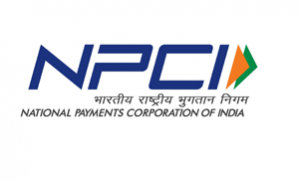National Payments Corporation of India (NPCI) is an umbrella organization for all retail payments system in India. It was set up with the guidance and support of the Reserve Bank of India (RBI) and Indian Banks’ Association (IBA). It is an initiative of Reserve Bank of India (RBI) and Indian Banks’ Association (IBA) under the provisions of the Payment and Settlement Systems Act, 2007 with the aim of creating a strong payment and settlement infrastructure in India.
Why was NPCI set up?
Before NPCI, there were many systems providing different services at different levels. So NPCI was proposed so as to consolidate and integrate all these systems and provide a uniform and standard business process for all retail payment systems in the country. NPCI was incorporated in December 2008 and the Certificate of Commencement of Business was issued in April 2009. It is registered under Companies Act 1956.
Considering the utility nature of the objects of NPCI, it was incorporated as a “Not for Profit” Company under the provisions of Section 25 of Companies Act 1956 (now Section 8 of Companies Act 2013).
NPCI has ten promoter banks namely, State Bank of India, Punjab National Bank, Canara Bank, Bank of Baroda, Union Bank of India, Bank of India, ICICI Bank, HDFC Bank, Citibank and HSBC.
Services provided by NPCI:
- National Financial Switch (NFS) ATM Network: It connects 1,98,953 ATMs of 449 banks. The service came into effect from October 15, 2009
- Cheque Clearing System
- Immediate Payments Service (IMPS): The service is provided 24x7x365.
- Automated Clearing House
- Electronic Benefit Transfer
- RuPay Card: It is a domestic card payment network to provide an alternative to international card schemes. As on end-October 2015 over 220 Million Indians own RuPay cards.
- Unified Payments System: The service was launched on 11 April 2016. It is aimed at providing a single id to transfer the funds anywhere (reducing the use of IFSC codes).
RUPAY:
NPCI launched a card scheme named “Rupay” on March 26, 2012. RuPay was however dedicated to India on 8 May 2014, by the then President of India, Pranab Mukherjee, at the Rashtrapati Bhavan in New Delhi.The payment system was indigenously developed with a vision to have a domestic, open and multilateral system of payments.
NPCI conceived rupay usage as an alternative to Mastercard and Visa while consolidate and integrate various payment systems in India.
RuPay, which is coined from words ‘rupee’ and ‘payment’, supports the issuance of debit, credit and prepaid cards by banks in India and thereby supporting the growth of retail electronic payments in India.
RuPay Contactless:
It is a contactless payment technology feature that allows cardholders to wave their card in front of contactless payment terminals without the need to physically swipe or insert the card into a point-of-sale device. This is done with the help of EMV-compatible, contactless payment feature similar to Mastercard Contactless, Visa Contactless, and ExpressPay which use RFID ( Radio-frequency identification) technology.
EMV:
- EMV is a payment method based upon a technical standard for smart payment cards and for payment terminals and automated teller machines which can accept them.
- EMV originally stood for “Europay, Mastercard, and Visa”, the three companies which created the standard.
Bharat QR:
It was developed by NPCI in September 2016 in collaboration with Mastercard, and Visa in September 2016. Money can be transferred directly without the use of physical cards through BharatQR where the money is received in the user’s bank account using IMPS (Immediate Payment Service).
- Bijlipay, an end to end digital payment solutions company, is the 1st Indian Point-of-Sale (PoS) devices providing company to enable Bharat QR code on the screens of its POS machines.
- According to RBI, Bharat QR Code is the world’s 1st inter-operable payment acceptance solution.
Aadhaar Payment Bridge(APB) system:
It was developed by NPCI. It links Govt. departments and their sponsor banks as well as beneficiary banks and the beneficiary on the other han





